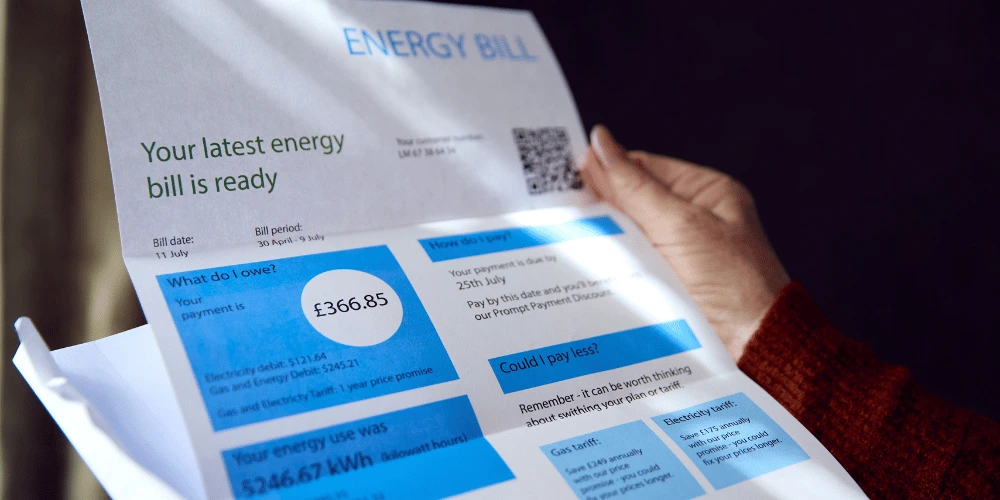Understanding the Weather Bomb Effect: Wind Power Surge and Energy Price Drops Explained
Anúncios
Introduction to the Weather Bomb Phenomenon
Definition and Characteristics of the Incoming ‘Weather Bomb’
A “weather bomb,” also known as explosive cyclogenesis, is a rapidly intensifying storm characterized by a dramatic drop in atmospheric pressure.
An incoming weather bomb is about to hit the UK with gusts reaching up to 80mph.
Anúncios
Such high-speed winds are expected to bring not only travel disruptions and potential damage but also significant changes in energy dynamics.
Expected Impact on UK’s Energy Production and Prices
This weather bomb follows a period of calm weather, known as dunkelflaute, which has led to near-zero renewable energy production in the UK.
Anúncios
Dunkelflaute results in heavy reliance on gas-fired power stations, which has sharply increased wholesale electricity prices, reaching almost £250 per megawatt-hour.
The arrival of the weather bomb will likely flip this scenario on its head.
The powerful winds could cause a surge in wind power production, pushing it from a meager 0.4GW to an impressive 16GW within just a couple of days.
Consequently, wholesale electricity prices are expected to drop significantly to £107/MWh and then further to £84/MWh.

Transition from Calm Weather to Extreme Conditions
The transition from near-zero energy output due to calm weather to a sudden spike caused by extreme wind conditions is a critical aspect of the UK’s energy landscape.
This sharp transition underlines the volatility and intermittent nature of renewable energy sources like wind power.
The extreme jump in wind power production can alleviate the reliance on gas, significantly reducing energy costs and demonstrating the dual-edged nature of renewable dependency.
While calm conditions lead to high costs and strain on fossil fuels, extreme weather events can provide a bounty of low-cost renewable energy, emphasizing the need for robust and flexible energy systems capable of adapting to such rapid changes.
The impacts of such transitions are crucial as they affect the entire energy market and the wider economy.
Being prepared for these shifts can make all the difference in maintaining not only a stable energy supply but also manageable energy costs for consumers.
As we move forward, understanding these dynamics will be central to addressing the challenges and opportunities presented by the UK’s renewable energy transition.
Current Energy Situation and Dunkelflaute
The Dunkelflaute Phenomenon
Dunkelflaute, a German term, refers to periods of low renewable energy output due to calm and overcast weather conditions.
This phenomenon causes a significant dip in electricity generated from renewable sources like solar and wind, which are heavily reliant on weather conditions.
Essentially, it’s the calm before the storm – a period where renewable energy generation is near non-existent, leading to substantial energy challenges.
Recent Wholesale Electricity Price Surge
Recently, the UK has experienced a stark example of dunkelflaute.
The calm, cloudy weather led to a considerable decline in renewable energy production, causing wholesale electricity prices to skyrocket to nearly £250 per megawatt-hour, almost seven times the pre-pandemic average.
This spike reflects the inherent volatility in energy markets reliant on weather-dependent renewables, especially when there’s a lack of stored energy to buffer the system.
Heavy Reliance on Gas-Fired Power Stations
When renewable energy falters during periods like dunkelflaute, the UK’s energy system becomes heavily dependent on gas-fired power stations.
In fact, during these times, gas-fired stations can account for up to 70% of electricity generation.
This reliance not only increases electricity costs but also underscores the pressing need for more resilient and sustainable energy solutions.
Transition to Extreme Weather Conditions
The UK’s recent challenges with dunkelflaute set the stage for incoming extreme weather conditions.
As we transition from calm weather to the expected ‘weather bomb’ with gusts of up to 80mph, yet another dramatic shift in the energy landscape is anticipated.
The high-speed winds are predicted to alleviate the energy crisis by surging wind power production, thereby drastically reducing wholesale electricity prices.
Understanding and addressing the implications of dunkelflaute, as well as managing the transition to more extreme weather, are crucial.
This highlights the broader need for robust energy systems that can withstand and adapt to such fluctuations, ensuring a stable and sustainable energy future.
Next, we will consider how forecasting wind power surges can significantly impact electricity prices and the potential benefits this brings to consumers.
Projected Impact on Energy Prices
Wind Power Surge
The anticipated arrival of a ‘weather bomb’ in the UK, characterized by extreme winds of up to 80mph, is set to dramatically alter the energy landscape.
This natural phenomenon, which follows a period of calm, low renewable energy output known as dunkelflaute, is expected to escalate wind power generation significantly.
Current forecasts indicate an extraordinary leap from a mere 0.4GW to an impressive 16GW of wind energy production.
Drop in Electricity Prices
This surge in wind power generation is expected to have a pronounced positive effect on electricity prices.
Under the current conditions, where energy production has heavily relied on gas-fired power stations, electricity prices have soared to around £250 per megawatt-hour.
However, with the impending wind power surge, prices are forecasted to drop dramatically.
Electricity prices are anticipated to decrease to £107 per megawatt-hour and eventually to £84 per megawatt-hour.
Such a significant reduction would represent a much-needed respite from the recent high costs driven by gas dependency.
Benefits for Consumers
The benefits of this increase in wind power are manifold and extend beyond the apparent drop in electricity prices.
Firstly, consumers can expect to see lower energy bills as the cost of wholesale electricity decreases.
This will be especially welcome given the recent spikes that have strained household budgets.
Moreover, the shift towards increased wind power generation will enhance energy security.
By reducing reliance on gas-fired power stations, the energy grid becomes less vulnerable to fluctuations in international gas prices.
This stability is beneficial not only for economic reasons but also in contributing to a more sustainable and environmentally friendly energy system.
Furthermore, a robust increase in renewable energy production, such as wind power, cuts down on carbon emissions, aligning with broader environmental goals.
This transition supports the UK’s broader strategy to mitigate climate change and accelerate the shift towards clean energy.
As we move forward, ensuring the energy system continues to operate efficiently during various weather conditions will be critical. This will entail substantial investments and adaptations in infrastructure to maintain resilience and flexibility.
Long-term Energy Storage Solutions
As we’ve seen, the UK’s energy system is susceptible to significant fluctuations due to varying weather conditions like the weather bomb and dunkelflaute.
This volatility underscores the need for robust long-term energy storage solutions to stabilize the grid and maintain a reliable supply of electricity.
The role of long-duration energy storage, particularly pumped hydropower, is crucial in this context.
The Need for Long-duration Energy Storage Infrastructure
Periods of high renewable energy output need to be effectively managed to ensure that excess energy can be stored and used during times of low production.
This is where long-duration energy storage comes into play.
Current battery technology, while useful, isn’t sufficient on its own to handle the large and prolonged dips in renewable generation that can occur during calm and cloudy periods.
Investing in substantial energy storage infrastructure is essential to balance out these fluctuations and provide a steady, reliable power supply.
Without such storage capabilities, the grid remains overly dependent on carbon-heavy and often expensive gas-fired power stations during periods of low renewable energy output.
Role of Pumped Hydropower in Managing Renewable Energy Fluctuations
One of the most promising solutions for long-duration energy storage is pumped hydropower.
This technology involves pumping water to a higher elevation during periods of surplus electricity production and releasing it to generate electricity when demand is high or renewable production is low.
Pumped hydropower can efficiently store large amounts of energy and release it over extended durations, making it ideal for offsetting the periodic lulls in wind and solar power.
This capability supports a more resilient and flexible energy system, capable of weathering the ups and downs of renewable energy production.
The UK’s energy system operator has highlighted the importance of expanding pumped hydropower capacity to manage these fluctuations effectively.
Targeted Increase in Storage Capacity by 2030
To address the challenges posed by renewable energy variability, the UK’s energy system operator has set ambitious targets for increasing storage capacity.
The goal is to achieve a fivefold increase in long-duration storage capacity, reaching between 11GW to 15GW by 2030.
This expansion is vital for smoothing out the variability in renewable energy output and ensuring a consistent energy supply.
Deploying 20GW of pumped hydropower storage could lead to substantial economic benefits, potentially saving the electricity system up to £24 billion by 2050.
These savings would in part result from reduced reliance on expensive gas-fired power stations during periods of dunkelflaute and other low renewable output scenarios.
Additionally, the enhanced storage capacity would help lower household energy bills, contributing to more stable and affordable electricity prices for consumers.
Preparing for the Future
As we move towards a cleaner and more sustainable energy system, developing long-duration energy storage solutions like pumped hydropower is critical.
Ensuring that we can store and effectively manage surplus renewable energy will not only enhance grid reliability but also provide significant economic advantages.
Transitioning to an energy system that can adapt to the unpredictable nature of renewable generation requires collaboration between the government, regulators, and private investors.
Building a resilient and flexible energy grid is a step towards a sustainable future, supporting low-carbon objectives and protecting consumers from price volatility.
Future Implications and Industry Response
Development of New Funding Framework by Ofgem for Private Investment
The UK’s energy industry is gearing up for significant changes as Ofgem, the energy industry regulator, is developing a new funding framework aimed at attracting private investment into long-duration energy storage solutions.
This initiative is crucial, especially considering the recent extremes in weather patterns affecting energy production and prices.
The framework is designed to encourage the investment needed to build essential infrastructure, such as pumped hydropower storage, by 2030.
Akshay Kaul, a director at Ofgem, has emphasized the urgency and importance of this ambitious goal.
The development of this infrastructure is vital for ensuring that the energy system can handle the expected fluctuations in renewable energy outputs.
By engaging private investors, the UK aims to mobilize the necessary capital to construct substantial energy storage capacities efficiently and promptly.
Potential £24 Billion Savings in Electricity System by 2050
One of the major drivers behind this initiative is the substantial financial savings projected for the electricity system.
The UK’s energy system operator estimates that scaling up long-duration storage solutions like pumped hydropower could save as much as £24 billion by 2050.
This significant reduction in costs stems from a decreased reliance on gas-fired power stations, particularly during periods of low renewable energy output—such as the recent dunkelflaute.
By implementing these storage solutions, the UK can reduce its dependency on expensive natural gas and better manage renewable energy resources, passing on the benefits to consumers through lower energy bills.
The industry recognizes the importance of these savings not just for economic reasons but also for the environmental impact, as increased storage capacity supports broader usage of clean energy.
Importance of Building System Resilience for Renewable Energy Stability
Building a resilient and flexible energy system is paramount for the UK’s sustainable energy future.
The weather bomb phenomenon and periods of low renewable output, like the dunkelflaute, highlight the need for robust infrastructure that can adapt to fluctuating conditions.
The targeted increase in storage capacity from 11GW to 15GW by 2030 is an essential step toward achieving this stability.
A modern energy system that maximizes the use of wind and solar power, combined with substantial energy storage solutions, offers the best deal to consumers and protects against volatile global gas prices.
It ensures that the energy supply remains stable, affordable, and sustainable, even during periods when renewable energy generation is low.
Efforts to build resilience and flexibility into the system are ongoing, and the engagement of private investors through the new funding framework is critical.
By addressing these challenges head-on, the UK can create a more stable, sustainable, and economically beneficial energy system for the future.






